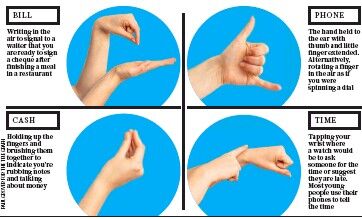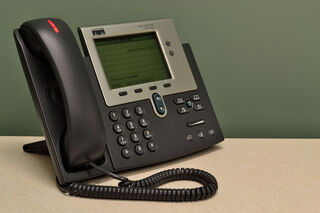Media
Technology Is Changing Our Hand Gestures
Younger people no longer understand traditional gestures.
Posted October 7, 2020 Reviewed by Gary Drevitch
How do you signal to a waiter, across a crowded restaurant, you want the check or bill? How do you signal that the person you’re addressing should phone you? How do tell another motorist, at the traffic lights, they should wind (or roll) down their window?

Gestures are older than spoken language. They complement and enhance our words. Imagine life without being able to point. We do it all the time—in a pastry shop, to signal that you want the croissant without the burnt edges, or to indicate to your host, at a dinner party how much wine you want: think forefinger raised over thumb on the vertical axis. A larger gap indicates more wine!
All changes with Generation Z
Some gestures have both pedigree and longevity. The ‘thumbs up’ and ‘crossed fingers’ gestures (both now immortalized as emojis) have persisted for over two thousand years. The ‘thumbs up’ gesture dates back to ancient Rome, when it was used by Caesar to spare a fallen gladiator. The ‘crossed fingers’, which now, in our increasingly secular world, signifies ‘good luck’, derives from early Christianity, when it invoked the blessing of Christ by signaling his crucifixion.
But in a sign of the times, for younger people, and specifically Generation Z, some of our most well-known hand gestures have changed. Common hand signals such as the mimed act of writing in the air to get the bill or check in a restaurant, or the tap on the wrist to ask the time, are at risk of dying out. Contactless payment systems and electronic billing systems have eliminated the need for check (or cheque) books, and many young people increasingly use their cell phones, rather than a wristwatch, to tell the time. It seems that as technology changes, some of the world’s most widely recognized gestures are beginning to lose their value and their communicative significance.
Call me!
One of the most widely recognized gestures in the western world − a hand to the ear, little finger and thumb extended — signals ‘talk by phone!’
But for young people today, many of whom have never interacted with, let alone even seen, a (now, old-fashioned) desk-top, hard-wired telephone, this specific gesture no longer makes sense.

Generation Z—children born between 1996 and 2009—are the first generation in history to be born digital. The 1990s ushered in the era of digital communication. With the rise of digital social media, smartphones, and, from the early 2000s ,commercially-available internet on the go, the way in which we interact with one another has been transformed. This is the selfie-generation, who are more likely to scroll through electronic pages on e-Reader or tablet computer, than thumb the physical pages of an old-fashioned book.
Consider the UK, an example of one representative well-developed IT market. As of 2020, research shows that 99% of young people here between age 16 and 24 own a smartphone. Perhaps unsurprisingly, therefore, the hand signal for the “old-fashioned” landline phone, as well as potentially others based on older technology, is becoming obsolete. Gestures that have a specific, conventional meaning – known as 'emblems' – are often culturally or generationally specific. Emblems that are specific to particular devices are likely to only to recognized by those who are familiar with such devices. And as technology changes, so too do the hand gestures.

In a recent Tiktok video, filmed under Covid lock-down, New Yorker Daniel Alvarado remarked “this is how you know you’re getting old”. He showed how his children, when asked to gesture “phone me”, each child held a flat palm to the side of their face to indicate a cell or mobile phone.

Wind down your car window
In similar fashion, the circular motion used to indicate the winding up or down of a car window may be on its way out. Generation Zers have little or no experience of cars without automatic windowing opening systems. Accordingly, Generation Zers are likely to signal “wind down the car window”, with a gesture invoking ‘press the forefinger downwards’.
Everything changes, in a changing world
And the ubiquitous writing in the air gesture used by diners to show they are ready for the bill will also become a thing of the past as manual writing of a bill, or signing a check for payment, is consigned to history.
Younger generations will increasingly not know what these signals are. The famous, now old-fashioned red phone boxes, on the UK’s streets, are all but disappearing. In the 21st century we all, or nearly all, use smartphones now and they are held very differently. Similarly, the traditional way of indicating a film in the game charades, by motioning an old-fashioned reel movie camera, will suffer the same fate. As people are no longer exposed to such technology, the emblems associated with them drop out of usage.
Embodied (or lived) experience
Much like words, emblematic gestures evolve, change, and die. For an 18-year-old in 2020, the landline telephone is still within their lived experience. But, as technology changes, and as Generation Z become parents to Generation Alpha—the first generation to be born solely in the 21st century—so our technological innovations will influence what remains and what dies in terms of our most common hand gestures. Like a flowing river, into which no one can step twice, so too history moves on. And like our language, our gestures change too, a reflection of the signs of our times.


